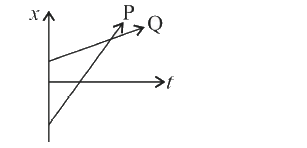Figure below shows the displacement-time curve of the particles A and B. Which of the following statements is correct?
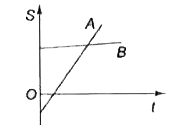
A
both A and B move with uniform equal speed
B
A is accelerated and B is retarded
C
both A and B move with uniform speeds but the speed of A is more than the speed of B
D
both A and B move with uniform speeds but the speed of B is more than the speed of A.
Text Solution
The correct Answer is:C
Because x - t graph is a straight line in either case, velocity of both is uniform. As the slope of S-t graph for A is greater, velcoity of A is greater than that of B.
|
Topper's Solved these Questions
- MISCELLANEOUS QUESTIONSBOOK - MCGROW HILL PUBLICATIONCHAPTER - MISCELLANEOUS QUESTIONSEXERCISE - PART-B
99 Videos
- MEASUREMENTBOOK - MCGROW HILL PUBLICATIONCHAPTER - MEASUREMENTEXERCISE - ELEMENTARY QUESTIONS (HIGHER ORDER THINKING QUESTIONS)
13 Videos
- MOTIONBOOK - MCGROW HILL PUBLICATIONCHAPTER - MOTIONEXERCISE - HIGHER ORDER THINKING QUESTIONS
48 Videos
Similar Questions
Knowledge Check
The displacement (x)-time (t) graph of a particle is shown in figure. Which of the following is correct ?
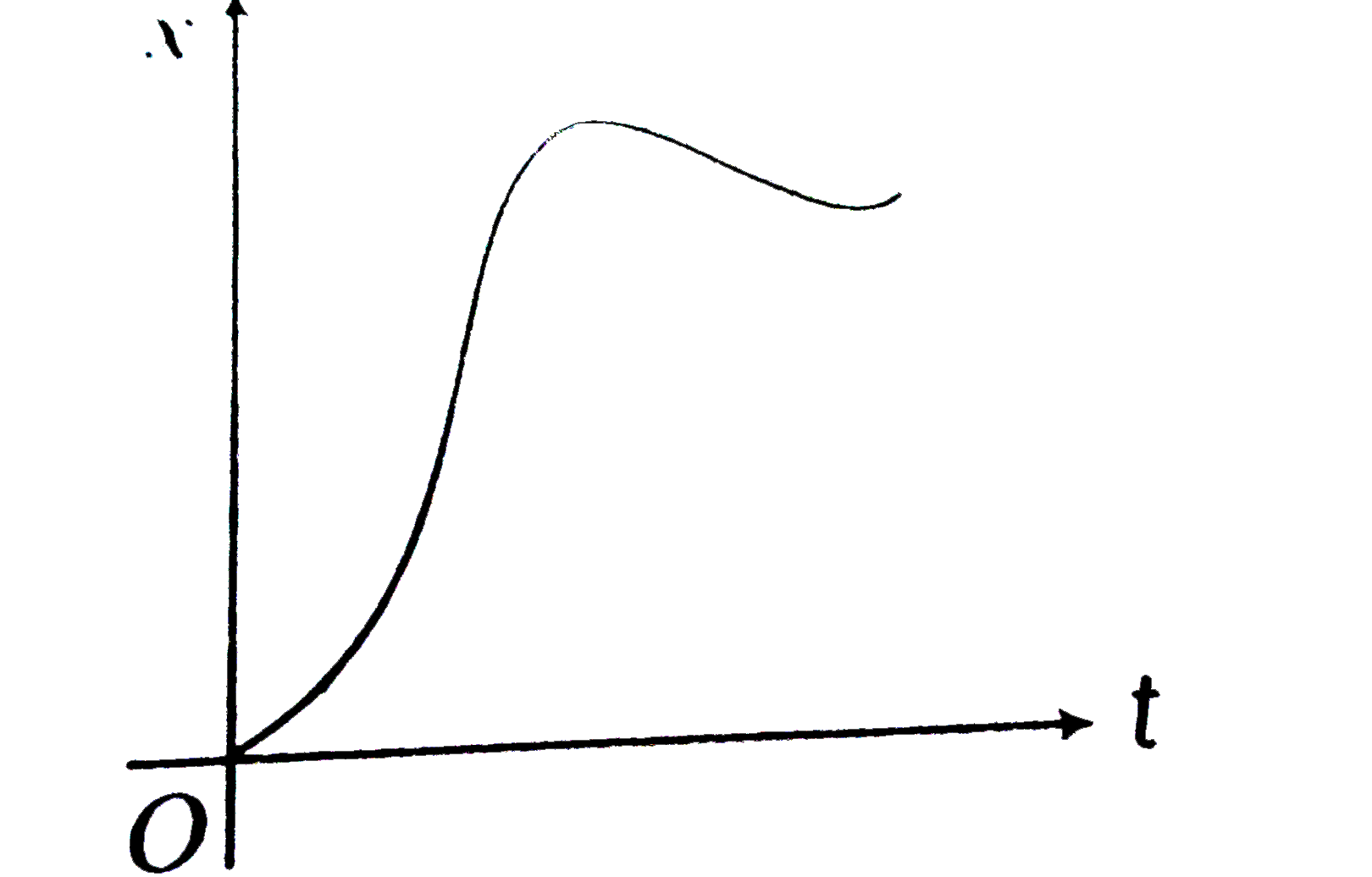 AParticle starts with zero velocity and variable accelerationBParticle starts with non-zero velocity and variable accelerationCParticle starts with zero velocity and uniform accelerationDParticle starts with non-zero velocity and uniform acceleration
AParticle starts with zero velocity and variable accelerationBParticle starts with non-zero velocity and variable accelerationCParticle starts with zero velocity and uniform accelerationDParticle starts with non-zero velocity and uniform accelerationThe displacement (x) - time (t) graph of a particle is shown in figure. Which of the following is correct?
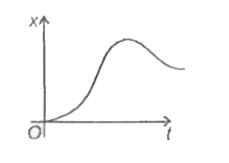 AParticle starts with zero velocity and variable accelerationBParticle starts with non - zero velocity and variable accelerationCParticle starts with zero velocity and uniform accelerationDParticle starts with non - zero velocity and uniform acceleration
AParticle starts with zero velocity and variable accelerationBParticle starts with non - zero velocity and variable accelerationCParticle starts with zero velocity and uniform accelerationDParticle starts with non - zero velocity and uniform accelerationFigure show the displacement - time graph of a particle moving on the x-axis
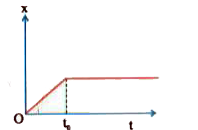 Athe particle is continuously going in positive X directionBthe particle is at restCthe velocity increases up to a time t0 and then becomes constant.Dthe particle moves at constant velocity up to a time t0 and then stops.
Athe particle is continuously going in positive X directionBthe particle is at restCthe velocity increases up to a time t0 and then becomes constant.Dthe particle moves at constant velocity up to a time t0 and then stops.
The displacement (x)-time (t) graph of a particle is shown in figure. Which of the following is correct ?

View SolutionFigure shows the displacement-time graph of a particle moving on the X-axis

View SolutionFigure shows the displacement time graph of a particle moving on the X-axis

View SolutionFigure shows the displacement time graph of a particle moving on the X-axis

View SolutionFigure shows the velocity of a particle moving on x-axis.

Which of the following statement is correct for the interval shown in graph?
View Solution

